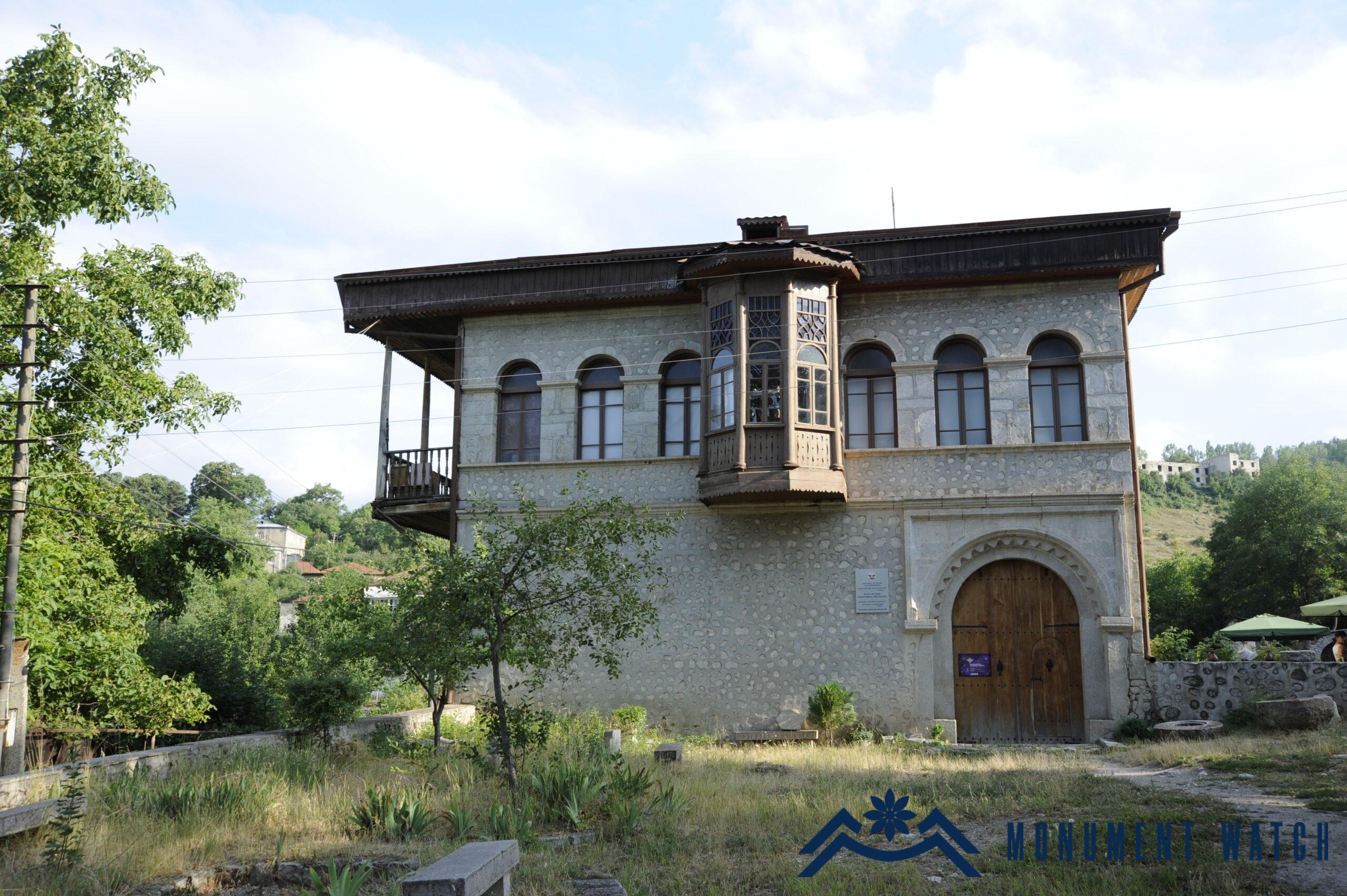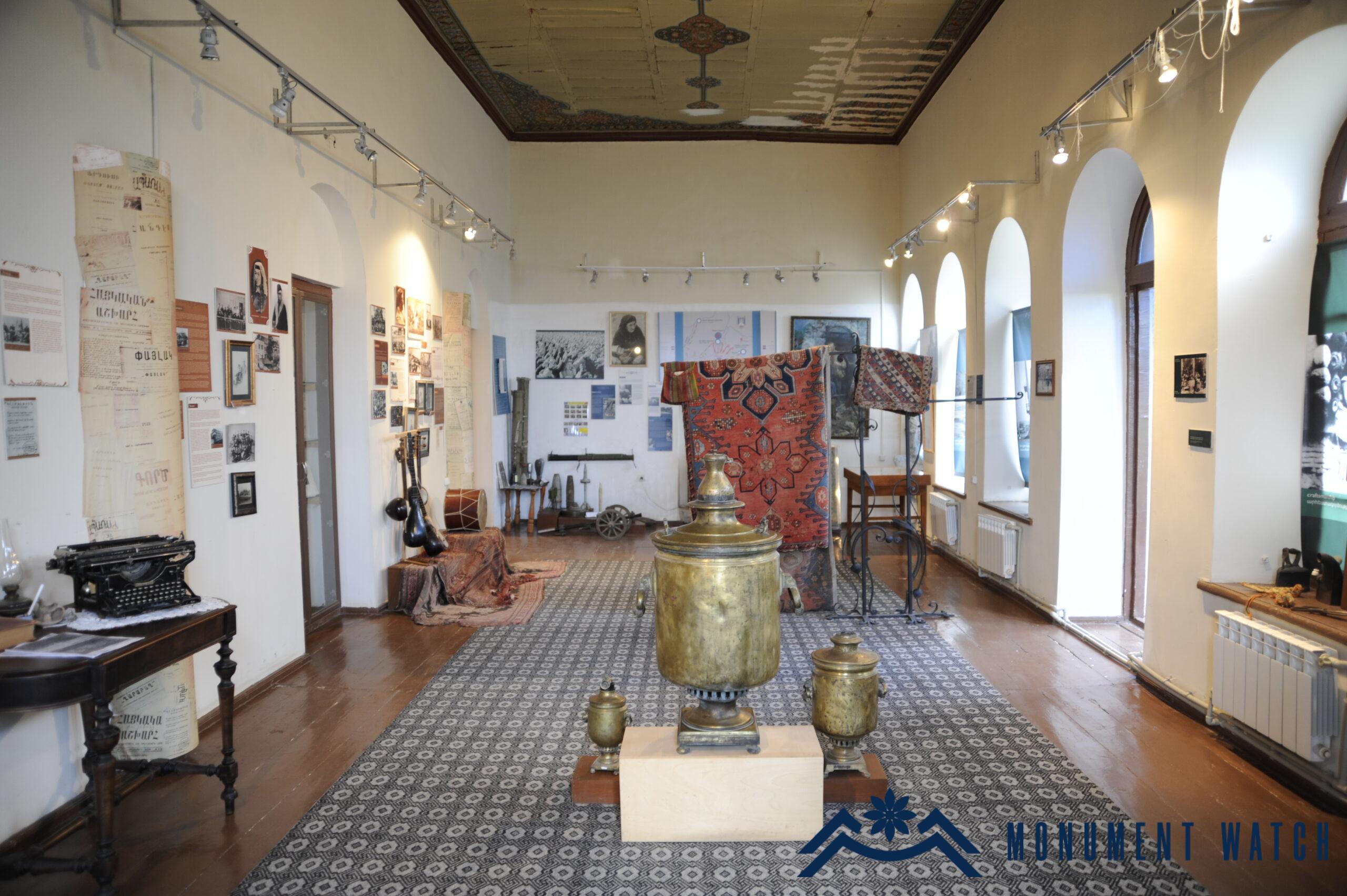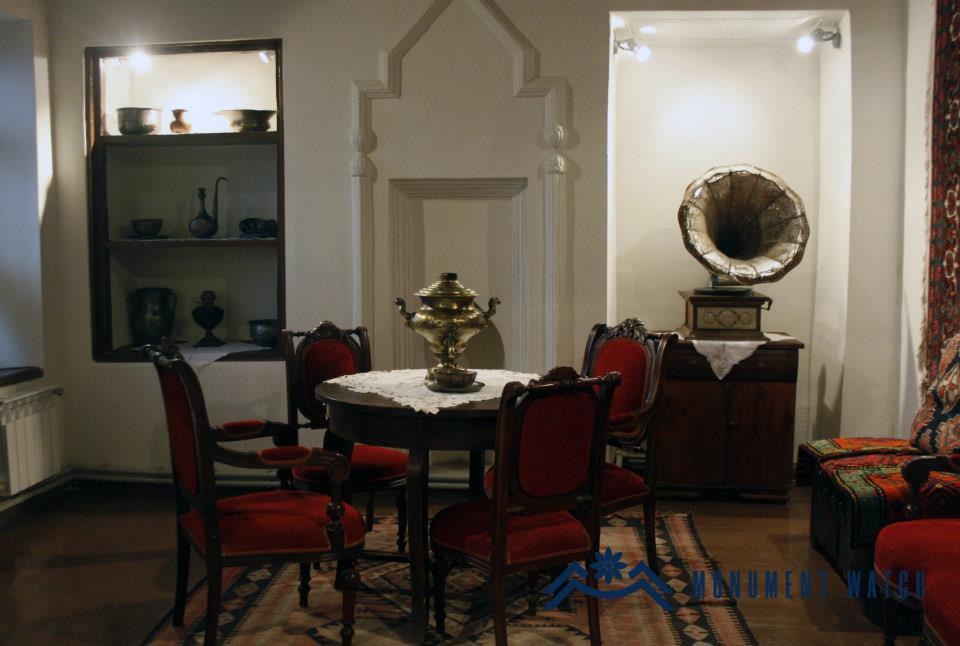
Shushi City’s History Museum
History
The History Museum of the Shushi City was situated in the heart of the district known as "Dzori Tagh," within the premises of a private house that once belonged to Lieutenant Yesai Gharamyants (Gramov) of the Tsarist army. The museum's address was 32 Mesrop Mashtots Street (Fig. 1). In the early nineteenth century, the building was owned by Lieutenant Yesai Gharamyants (Gramov). However, in 1918, the building came into the possession of Dr. Mehmandarov, who was known for his hostility and hatred towards Armenians. From 1921 to around 1971 or 1972, the building served as a maternity hospital. Subsequently, from 1973 until 1992, it was purposed to house the "Museum of Oriental Carpets." On May 28, 1992, the "Shushi Historical and Geological Museum" was inaugurated at this location, and it remained under this name until 2014 when it was officially renamed as the "Shushi City History Museum."
The museum boasted a diverse collection. Agricultural and economic life, family tools, and devices (yoke, plow, spades, scythes, pitchfork, churn, cradle, etc.) were shown in the hall (Figs. 2-5). The main exhibition began on the second floor and featured artifacts discovered during excavations in Shushi and its adjacent areas ranging from the second millennium BC to the late Middle Ages (Petrosyan, Safaryan 2007) (Figs. 6-11). A significant section of the exhibition was devoted to depicting life in Shushi. Furniture, various kitchen items (Fig. 12), musical instruments, as well as rugs and carpets (Fig. 13) were on display. Another part of the exhibition hall was reserved for showcasing the interior of a 19th-century prosperous family apartment from Shushi (Fig. 14).
The collection
The museum's collection consisted of more than 5,000 exhibits. Among these were archaeological artifacts unearthed during excavations in Shushi, ethnographic objects dating from the 18th to the 20th centuries, as well as an assortment of books, periodicals, photographs, numismatic collections, and various other historical documents.
The 19th-century household objects vividly portrayed the daily life of Shushi's residents, highlighting its significance as an important cultural center in the South Caucasus (Danielyan, Gasparyan 2022, 190). The collection of photographs and panels adorning the exhibition halls brought the settlement's life during those eras to life, making it tangible.
The history of the first Artsakh war, the April four-day war, was told in distinct panels using weaponry, various defused mines, and other artifacts. A separate panel was dedicated to the narrative of Shushi's liberation on May 8-9, 1992. A miniature model of the military operation "Wedding in the Mountains" was exhibited as part of this theme (Fig. 15).
The activity of the museum before the war
The Shushi City History Museum holds the distinction of being one of the city's earliest cultural establishments. Its role extended beyond mere exhibition and educational activities, encompassing significant involvement in collecting and conducting research as well. Throughout the years, the museum has served as a storage space for gathering information and records about Shushi's architectural landmarks, notable individuals, and the city's history.
In recent years, the museum has also hosted events and visits commemorating International Museum Day, European Cultural Heritage Day, and other professional holidays.
The condition after the war
During the 44-day war, the museum's entire exhibition and the objects kept in its collections fell under Azerbaijani control.
The status of the museum's collection became ambiguous following the occupation of Shushi, and no information is available regarding its location, storage conditions, or overall state. Given the well-known fact of Azerbaijan's policy of expropriating Armenian history, there are severe concerns concerning the museum's collection's preservation and physical existence.
The museum and international law regulations
The 1954 Hague Convention for the Protection of Cultural Property in the Event of Armed Conflict, along with its two protocols (1954 and 1999), serves as the international legal and legislative framework for safeguarding cultural property, including museums and their collections, during times of armed conflict. Article 4 of the 1954 Hague Convention for the Protection of Cultural Property in Time of Armed Conflict prohibits various actions that can cause harm to cultural heritage. These actions include vandalism, theft, robbery, and misappropriation, as well as engaging in hostilities and reprisals that target cultural heritage.
It is prohibited to destroy cultural or spiritual values in occupied territories, according to the first Hague Protocol of 1954. The requirement is reaffirmed in the Second Hague Protocol of 1999, which classifies such an act as an international crime under Article 15. Actions aimed at destroying cultural values are also prohibited by four international conventions and protocols on the protection of victims of war, rules, and customs of war of Geneva of August 12, 1949, as well as applicable UN resolutions and human rights treaties.
Bibliography
- Danielyan, Gasparyan 2022 - Danielyan E., Gasparyan L., Museums of the City of Shushi, Works of the History Museum of Armenia, Yerevan, 189–190.
- Petrosyan H., Safaryan V., Medieval Shushi according to archaeological excavations, Shushi: Cradle of Armenian Civilization, Proceedings of the conference dedicated to the 15th anniversary of the liberation of Shushi, Yerevan, 2007, pp. 268–272.













